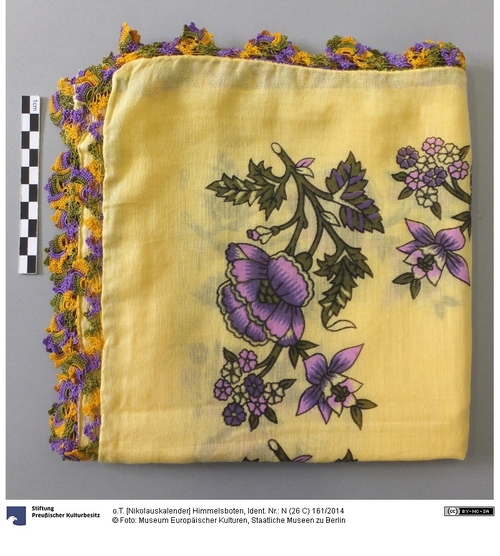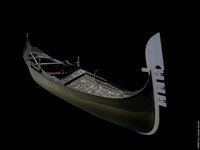Das Kopftuch ist fast quadratisch. Es wird über einer Unterhaube gebunden und verdeckt die Haare der Trägerin. Es wurde aus gelber Baumwolle leinwandbindig gewebt. Am Rand befindet sich auf allen Seiten eine gedruckte Blumenborte aus lila Blüten mit olivgrünen Stengeln. Unten links sind das Firmenzeichen "FIRAT KÖK BOYAMA" und 5 Sterne ebenfalls aufgedruckt. Auf zwei Seiten steht die Zahl 430. Alle vier Seiten sind mit einer kunstvollen Spitze in den Farben lila, gelb und olivgrün umhäkelt.
en

